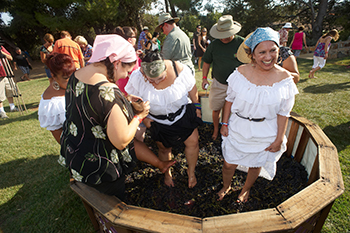San Diego Vintners Association (SDCVA) | Find the Best Wineries & Wine in San Diego County
AVA Information
American Viticultural Areas (AVAs) are growing regions that establish the geographical pedigree of wines

IMAGE COURTESY OF ORFILA WINERY
There are about 200 AVAs in the U.S. Three of them are within San Diego County. The largest of these, the South Coast AVA, stretches from Malibu to the Mexican border. Contained within this large area are a number of smaller AVAs, two of which are in San Diego County. The older of the two, the San Pasqual Valley AVA, was established in 1981, making it one of the oldest AVA designations in America. It comprises about 9,000 acres of total area and is located on the banks of the San Dieguito River near Escondido. The other local designated area is the Ramona Valley AVA, established in 2006 and encompassing about 89,000 acres of total area, surrounding the town of Ramona.
According to the Alcohol and Tobacco Tax and Trade Bureau (TTB), the government agency that regulates AVAs:
“A viticultural area for American wine is a delimited grape-growing region having distinguishing features as described in the Code of Federal Regulations (CFR) at 27 CFR part 9 and a name and delineated boundary as established in part 9 of the regulations. These designations allow vintners and consumers to attribute a given quality, reputation, or other characteristic of a wine made from grapes grown in an area to its geographic origin. The establishment of viticultural areas allows vintners to describe more accurately the origin of their wines to consumers and helps consumers to identify wines they may purchase.”









